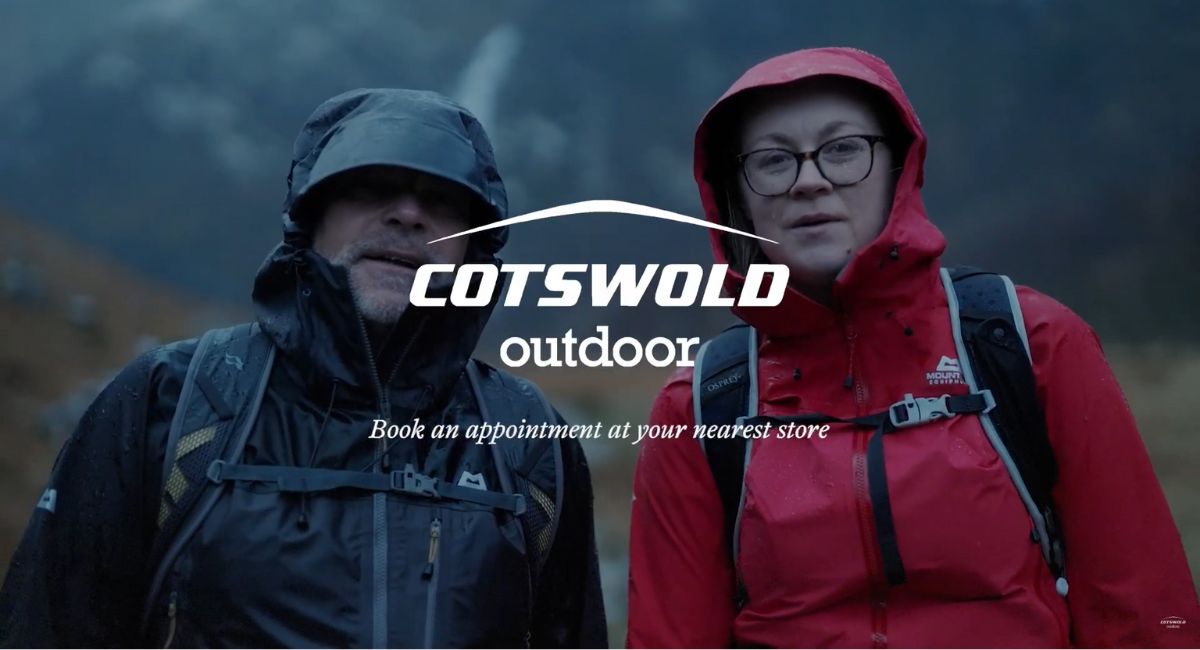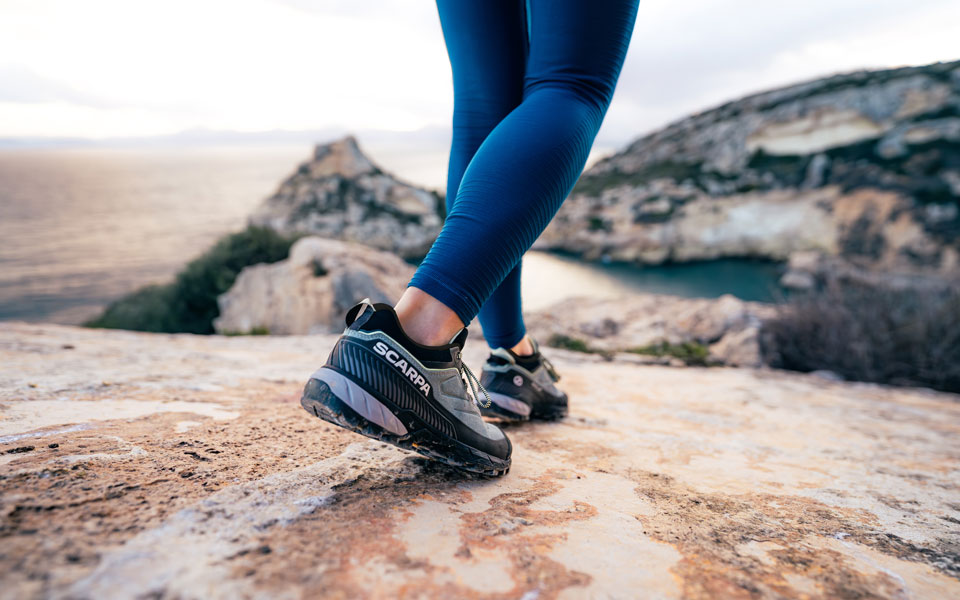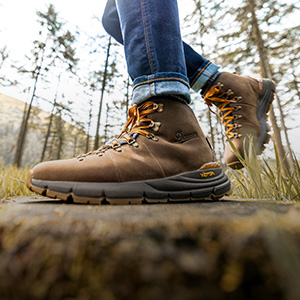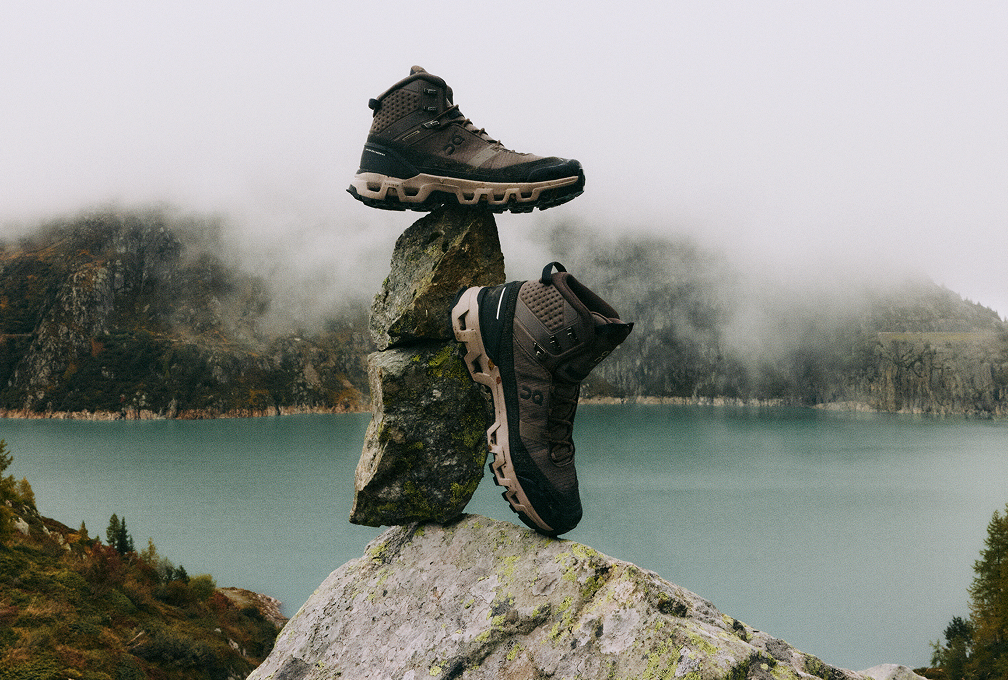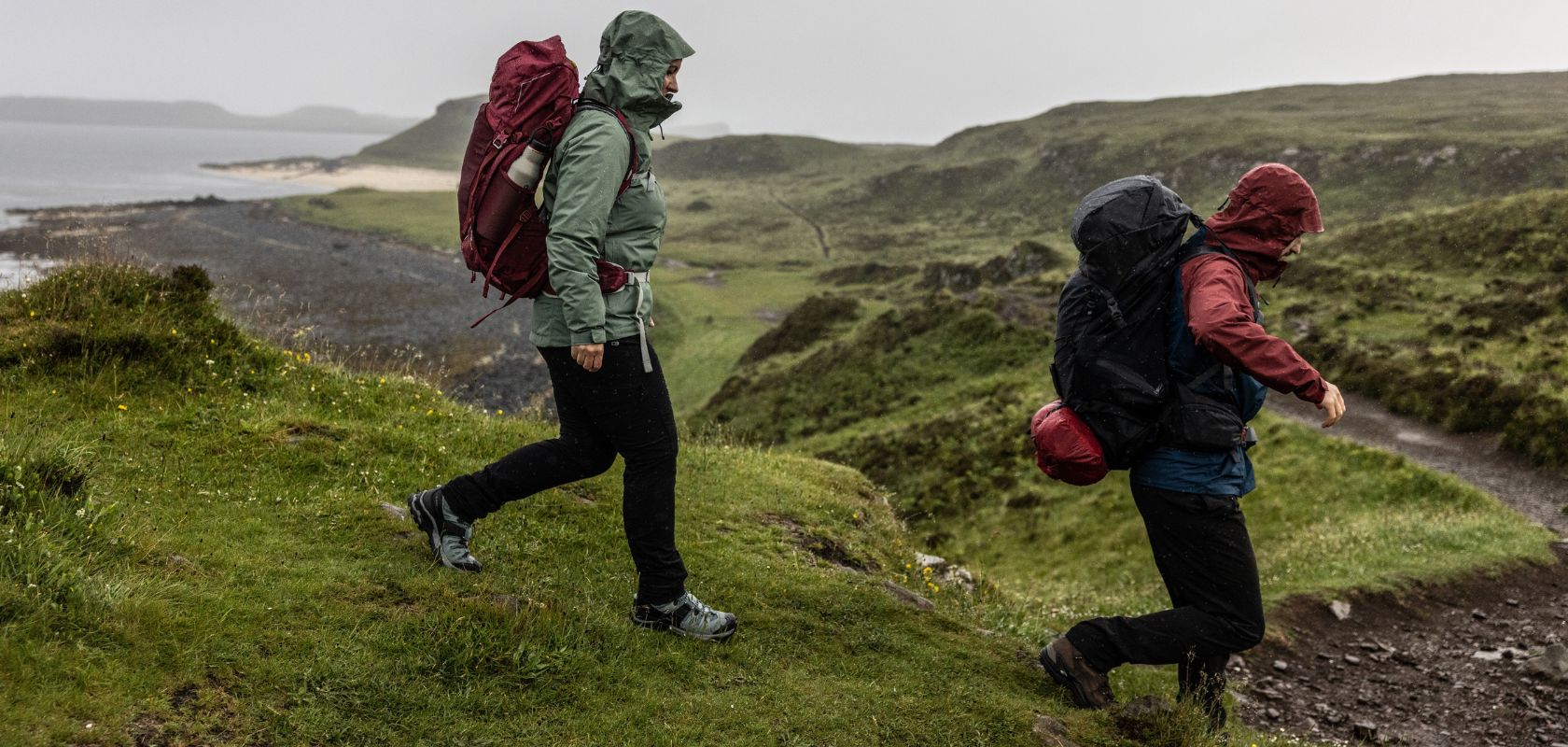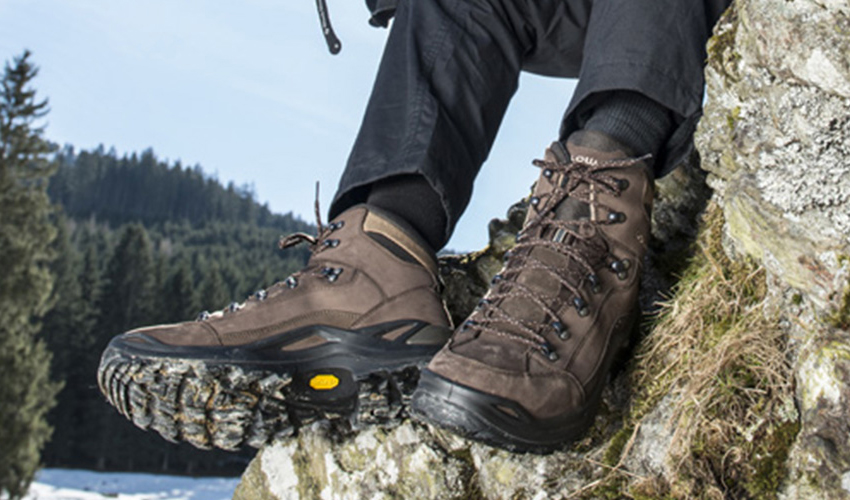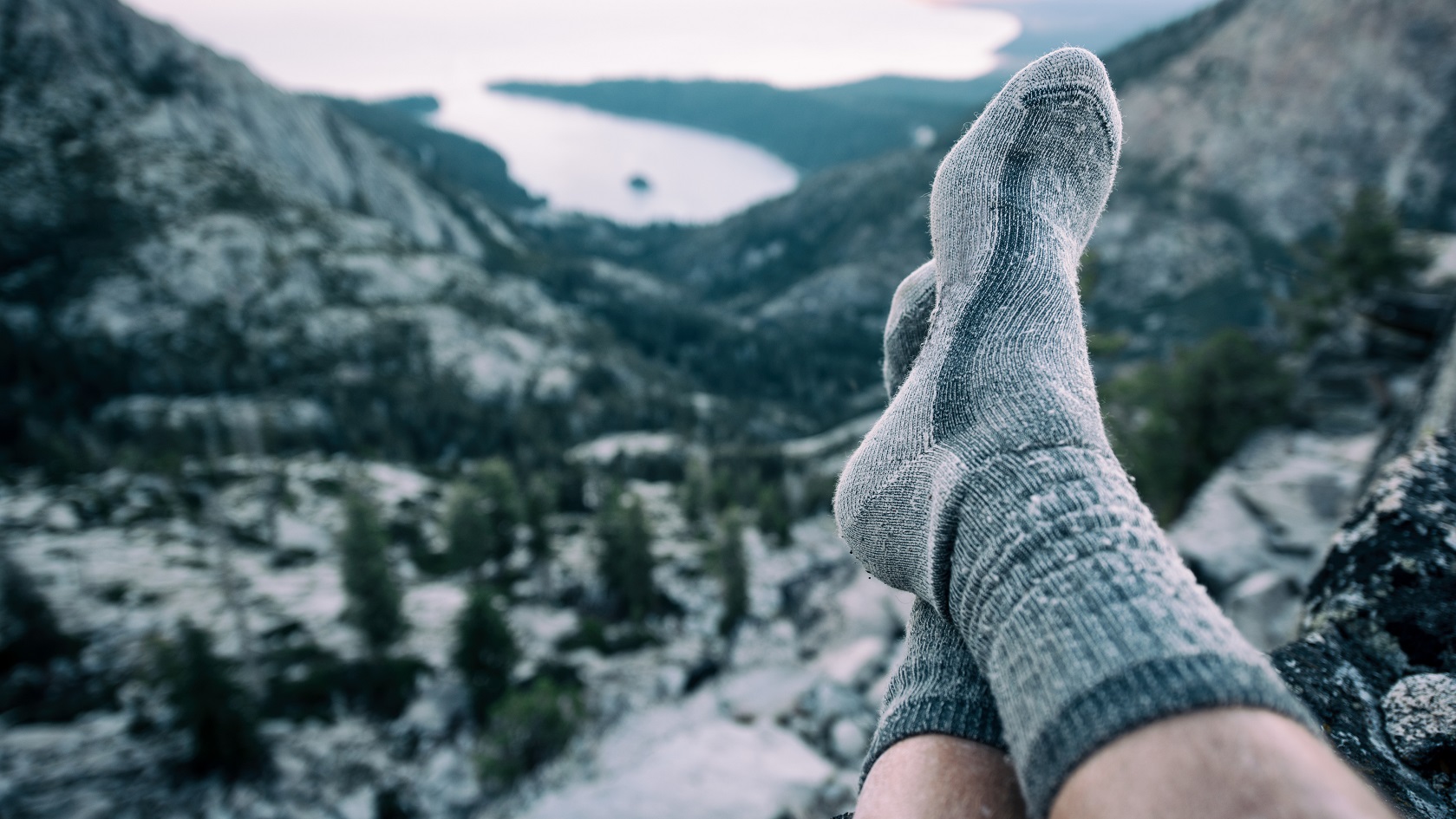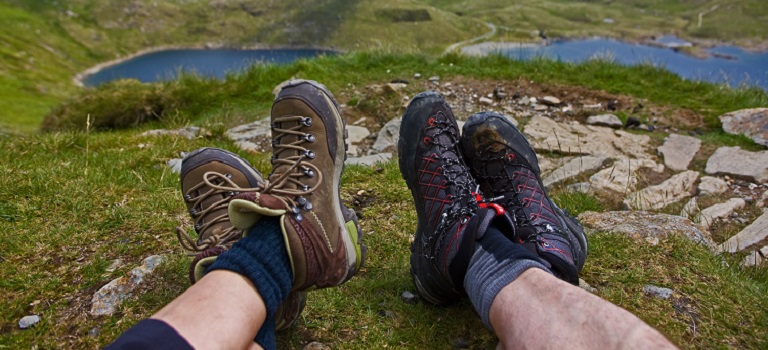Boot Fitting Guide
Our Expert Guide to Perfectly Fitting Footwear
Finding walking boots that fit like a glove is more than just a comfort upgrade-it’s essential for your adventures, your performance, and the long-term health of your feet. Whether you’re gearing up for a multi-day hike, a winter snowshoe, or just want something reliable for your daily commute, the right fit can make all the difference. Ill-fitting boots can lead to blisters, foot fatigue, and even long-term injuries, while a well-fitted pair will keep you moving comfortably for miles.
Book a Free Expert Footwear Fitting
If you're unsure of the perfect shoes or boots for your next big outdoor adventure, why not pop into your local Cotswold Outdoor store for a Free Expert Footwear Fitting? Our free outdoor boot fitting service has one of our in-store experts help pick out the ideal shoes for you and your outdoor pursuits by asking about your walking habits, getting you measured and fitted, and giving you expert shoe and walking boot recommendations made just for you and your feet.
Why Walking Boot Fit Matters
Let’s be honest-there’s nothing worse than heading out on a walk and realising every step is a struggle because of your boots. Poorly fitted boots can reduce your stability, sap your energy, and increase your risk of injury. Here’s why getting the fit right is so important:
- Reduced friction → Say goodbye to hotspots and blisters.
- Enhanced control → A snug fit means better grip and confidence on uneven ground.
- Long-term foot health → Prevents issues like bunions, plantar fasciitis, and even bruised toenails.
Did you know? Studies show around 65% of hikers experience foot pain from ill-fitting boots. At Cotswold Outdoor, our free in-store boot fitting service tackles these issues head-on, using gait analysis and expert adjustments to ensure your walking boots are just right.
Key Components for Optimal Fit
Understanding the different parts of your hiking boots helps you appreciate why fit is so important-and what you can tweak for better comfort.
Shell Structure
The outer shell is the backbone of your boot. Materials like nylon or carbon fibre determine how much support, flexibility, and durability you get. For example, carbon fibre shells are super lightweight and strong, but they don’t have much give, so the fit needs to be spot-on. Nylon shells, on the other hand, offer a bit more flexibility and comfort, making them a popular choice for walking and hiking boots.
Shell Modification → Sometimes, even after heat moulding, you might need a little extra room. Professional boot fitters can “punch” or “grind” the shell-using special tools to expand tight spots around bunions or other problem areas. This is especially useful for people with unique foot shapes or persistent pressure points.
Heat-Mouldable Liners
Many modern hiking boots use liners that can be heat-moulded to the shape of your foot. Brands like Intuition™ are known for this. After about 20 hours of use, these liners will “pack out” by around 15%, adapting to your unique contours. The heat-moulding process involves gently warming the liner so it softens and shapes itself to your foot, reducing pressure points and increasing comfort. For best results, replace liners every 100–150 hours of use.
Volume Adjustments
If your walking boots feel too roomy, volume reducers (thin foam inserts) can be placed under the footbed or tongue to take up excess space. This is a quick fix for people with low-volume feet or those who experience foot slippage inside the boot.
Footbeds and Orthotics
The footbed (or insole) is where your foot meets the boot. Custom insoles, like those from Superfeet, can correct arch alignment and help distribute pressure more evenly. Footbeds come in a range of materials-gel, foam, cork-each offering different levels of cushioning and support. Over 70% of people say they feel less fatigue with the right footbed, so don’t overlook this simple upgrade.
Step-by-Step Boot Fitting Process
1. Measuring Your Feet
Your feet change throughout the day, so timing matters! Measure your feet in the evening, when they’re likely to be up to 8% larger due to natural swelling. Use a Brannock device (the classic foot-measuring tool you’ll find in most shoe shops) or trace your foot on paper, adding 10–15mm to allow for toe movement and swelling during activity.
Sizing Nuances
- EU vs UK sizes → Some brands, like SCARPA, use EU sizing. Always check conversion charts.
- Half-sizes → These often change the liner thickness rather than the shell length, so always try boots on with the liner you’ll actually use.
2. Shell Fit Check
Take the liner out of the walking boot and pop your sock-clad foot into the shell. You’re looking for:
- Length → 10–20mm of space at the toe to prevent bruising, especially on descents.
- Width → Snug but not pinching at the forefoot-this helps avoid hotspots.
- Instep clearance → About 10mm above the highest point of your foot, giving room for swelling and movement.
3. Lacing Techniques for Precision
How you lace your boots can make a world of difference.
- Heel-lock method → Keeps your heel firmly in place, especially on steep descents.
- Toe-to-top tension → Secure the midfoot without cutting off circulation-comfort and control in balance.
- Test on slopes → Walk up and down a ramp or slope to check for toe impact and heel hold. If you feel any movement or pressure points, adjust accordingly.
Choosing the Right Pair of Socks
It’s easy to overlook socks when thinking about hiking boot fit, but they play a crucial role in overall comfort and performance. The right socks can prevent blisters, wick away moisture, and even help fine-tune the fit of your boots.
What to Look For in a Good Pair of Socks
- Material matters → Opt for technical fabrics like merino wool or synthetic blends. These materials wick moisture away from your skin, regulate temperature, and dry quickly-unlike cotton, which holds onto sweat and can cause blisters.
- Cushioning and thickness → Choose socks with appropriate padding for your activity. Thicker socks can fill out boots that feel a little roomy, while thinner socks are ideal for a snug fit or warmer weather.
- Seamless construction →Look for socks with flat or seamless toes to reduce friction and prevent hotspots.
Common Boot Fitting Issues & Solutions
| Issue | Causes | Solutions |
|---|---|---|
| Heel slippage | Oversized shell | Use heel-lock lacing; add J-bar inserts to lock the heel in place. |
| Toe cramming | Narrow toe box | Size up or choose wide-last models for more room. |
| Hotspots | Seam pressure | Heat-mould liners; punch shell at pressure points to relieve discomfort. |
| Cold feet | Restricted circulation | Size up half a size; use thermal socks (Smartwool) to improve warmth. |
If your walking boots feel too roomy, volume reducers (thin foam inserts) can be placed under the footbed or tongue to take up excess space. This is a quick fix for people with low-volume feet or those who experience foot slippage inside the boot.
Shop Our Outdoor Footwear Range
Professional vs. DIY Boot Adjustments
When to Visit a Boot Fitter
Some situations really do call for an expert touch:
- You have complex foot shapes (high arches, bunions, or previous injuries).
- You need custom shell modifications (grinding, stretching, or punching).
- You’re preparing for technical adventures (mountaineering, ski touring) where precision is everything.
At Cotswold Outdoor, our boot fitters have years of experience and the right tools to make these adjustments safely and effectively.
DIY Fixes for Common Issues
- Stretch tight areas → Use a boot stretcher or carefully apply heat to expand problem spots.
- Reduce volume → Add foam pads under the tongue or footbed for a snugger fit.
- Replace laces → Switching to locking laces can help maintain tension and prevent loosening during long walks.
Boot Maintenance for Longevity and Performance
Taking care of your walking boots will keep them performing at their best for years:
- Air-dry liners → After a wet walk, remove the liners and let them dry naturally. Avoid radiators, as intense heat can damage the foam and shape.
- Re-waterproof regularly → Use a product like Nikwax® every 20–30 outings to maintain water resistance.
- Rotate boots → If you walk a lot, give your boots a day off between wears to help them keep their shape and prevent odours.
FAQs
Check five key areas: the flex point, heel, width, arch, and toe box. Boots should feel snug but not tight, with enough room in the toe box for your toes to wiggle and minimal heel slip (no more than ¼ inch). Your foot shouldn’t slide forward when walking downhill.
Absolutely! Just remove the standard footbed first. Look for boots with removable insoles to make this easier.
Aim for 10–20mm-enough for your toes to wiggle, but not so much that your foot slides forward. A quick test: with the liner out, slide your foot forward and check if you can fit your index finger behind your heel.
Walking boots should feel snug around the forefoot and heel but never painfully tight. They should not pinch or cause discomfort. Leather boots will stretch slightly with wear, but if they feel loose from the start, try thicker socks or an insole to improve the fit.
A little heel slip (up to ¼ inch) is normal in new boots and should reduce as the boots break in. If it persists, try different lacing techniques or add heel grips. Excessive heel movement means the boots are too big.
If the boot’s natural flex point doesn’t align with the widest part of your foot (the ball), you may experience pinching or rubbing. The boot should bend where your foot does for maximum comfort.
Very! Choose moisture-wicking, technical socks (avoid cotton) that match your activity and boot style. The right socks help prevent blisters and fine-tune the fit.
Related articles

Let us know you agree to cookies
We use marketing, analytical and functional cookies as well as similar technologies to give you the best experience. Third parties, including social media platforms, often place tracking cookies on our site to show you personalised adverts outside of our website.
We store your cookie preferences for two years and you can edit your preferences via ‘manage cookies’ or through the cookie policy at the bottom of every page. For more information, please see our cookie policy.

